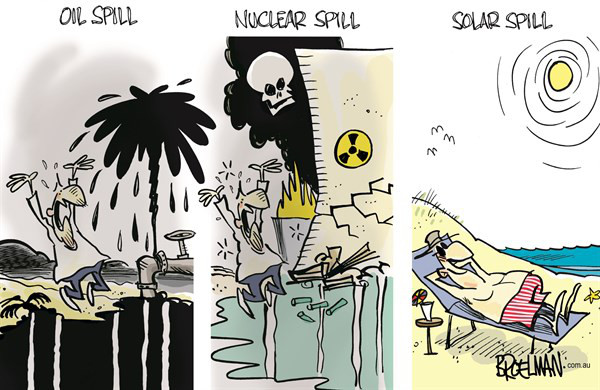The Oil Spill Heard ‘Round the World
Fossil Fuel Production and Consumption Have Unleashed a Greater Crisis

Fifty years ago today, Union Oil’s Platform A off the coast of Santa Barbara, California, caused a blowout that unleashed four million gallons of heavy crude oil into the ocean and onto miles of pristine coastline. Over the next days and months, the massive oil slick spread through the Santa Barbara Channel, along many of the Channel Islands, and onto beaches from Goleta to Ventura. This spill was the worst in the nation’s history and quickly became “the spill heard around the world.”
The response to this catastrophic blowout was swift and dramatic — from the streets and beaches of Southern California to the halls of Congress. Senators, political activists, and even President Nixon came to bear witness to the devastation. Everyday citizens came out in protest and anguish, contributing to a movement that had yet to be named, but that became the beginnings of modern environmentalism. Soon, some of the first community-based environmental organizations in the country and one of the first Environmental Studies programs at a major university — UC Santa Barbara — emerged to give voice to that movement.
Within a year of the spill, Congress passed the first major environmental protection law, the National Environmental Policy Act, and President Nixon designated a new cabinet-level agency, the Environmental Protection Agency. Shortly thereafter, several other environmental laws passed with broad bipartisan support and were signed by a Republican President Nixon and Governor Reagan. By spring 1970, people around the nation were gathering and supporting one another at the first Earth Day.
While there was progress made following the Santa Barbara oil spill, we are keenly aware that the fossil fuel industry’s destructive legacy was not limited to an isolated event. Over the decades following the Santa Barbara oil spill, the U.S. experienced other, larger spills of unimaginable magnitude — including the Valdez tanker spill in 1989 and the Deepwater Horizon explosion in 2010. More recently, in 2015 an onshore pipeline carrying crude oil ruptured along the Gaviota Coast of Santa Barbara County, spilling oil that spread 150 miles down the coast all the way to Manhattan Beach.
These disastrous and inevitable consequences of oil development make it all the more urgent that we stay vigilant in the face of continued threats, including the Trump administration’s stated desire to open more than 90 percent of our nation’s coast to new offshore oil drilling.
We are also called to respond to an even greater crisis — the effect of fossil fuel production and consumption on our climate. Like communities around the world, the Central Coast is facing a future of more severe weather, species extinction, changing ocean chemistry, and projections for significant sea level rise. Here in Santa Barbara, cycles of higher temperatures, extended droughts, year-round fire seasons, and changes in rainfall patterns (such as microbursts and rainbombs) are the types of climate change impacts linked to catastrophic disasters like the 2017 Thomas Fire and the 2018 Montecito Debris Flow.
Among the many lessons we can take away from the 1969 oil spill is the community’s response. Those who were involved with the events catalyzed by the spill — now elders and mentors in the environmental movement — talk not just of the devastation but of a deep desire to protect the special place they called home and the civic pride that came from working together. We need that same kind of passion and commitment today.
Only this time, we need swift and all-encompassing action to heal our planet and prevent further harmful climate disruption. We need laws and economic practices that hold fossil-fuel companies accountable and incentivize those who lead us toward environmental health. We need to bring in youth. We need to bring in women. We need to ensure that those who are most impacted by the fossil-fuel industry — often people of color and low-income communities — are at the center of the community response and leading the way.
Fortunately, change is possible. Some of the same solutions that will protect our coast from the risks of offshore oil development can help stabilize our climate. These include phasing out our reliance on fossil fuels, transitioning to solar and wind energy, and employing nature-based solutions to sequester existing carbon emissions. These solutions are not only good for the environment, they are also good for key economic sectors — including agriculture, fishing, tourism, and tech companies. In addition, many local governments and major employers are leading the way by setting aggressive clean energy targets and divesting their investment portfolios from fossil fuels.
This is a call to action for a new environmentalism. Now — with scientists calling out the need for immediate, radical action on climate — is the time for renewed bipartisan support for a future that honors all living things, and ensures a healthy, prosperous future. We have a chance to do it better and more inclusively now, with all of our community, as we look forward to the next 50 years.
Linda Krop has served as Chief Counsel of the Environmental Defense Center since 1999 and is recognized across the State of California as a leader in fighting offshore oil development. Her efforts led to the unprecedented termination of 40 federal oil and gas leases in the Santa Barbara Channel, defeat of several oil drilling proposals, and the end of tankering along California’s coast.
Sigrid Wright is the first woman CEO/Executive Director of Community Environmental Council — a solutions-based nonprofit formed in response to the 1969 oil spill. She has been leading place-based environmental activism for more than 25 years and is recognized for her work in regional solutions to climate change, food system reform, and energy policy.



